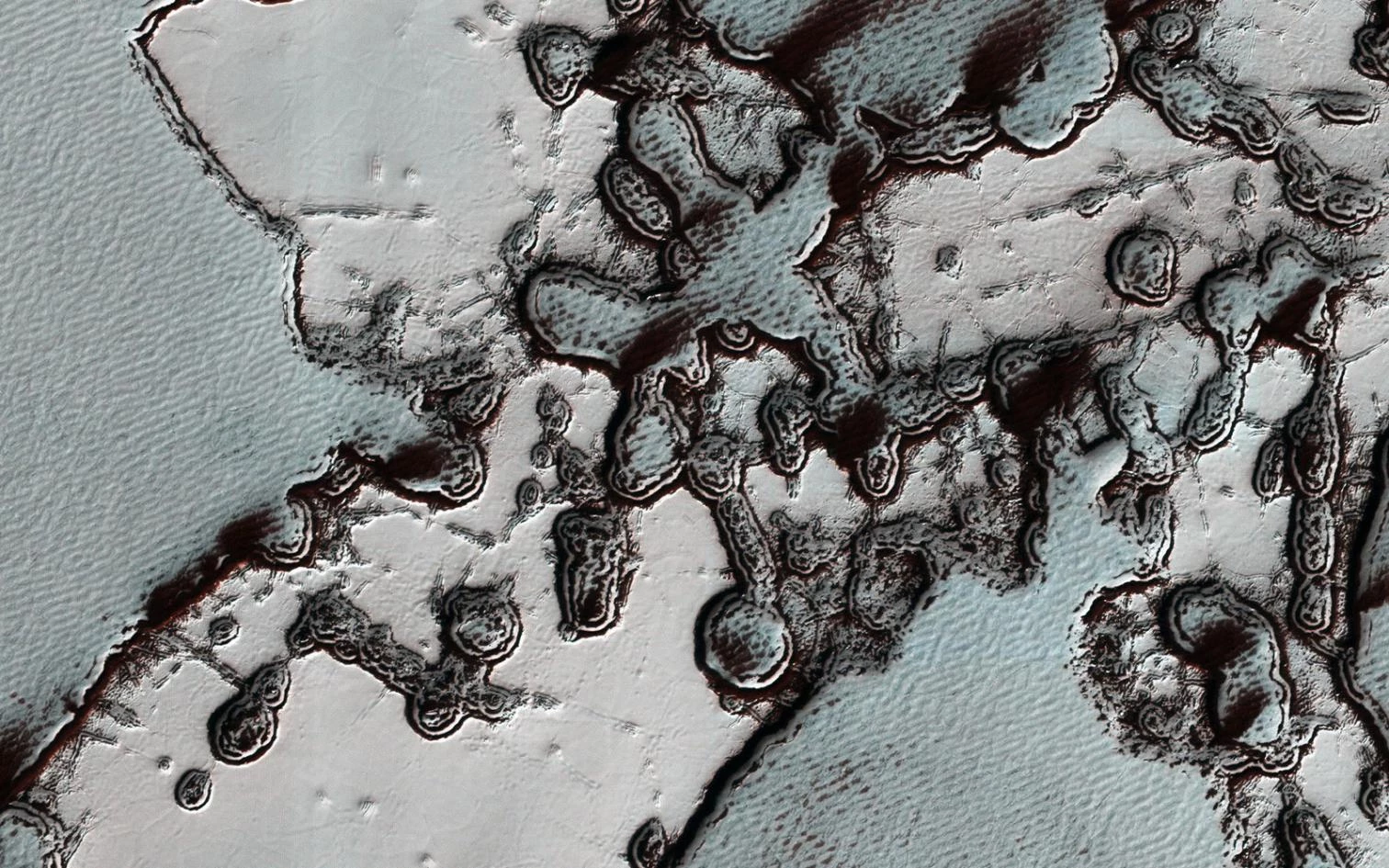
This image looks like something seen through a microscope, but no, this is a large swath of Martian terrain. This section of the South polar ice cap consists in part of frozen carbon dioxide, which melts over the summer months. The melting carbon dioxide ice reveals pockets of darker material below the surface.
This year will be a big one for the Red Planet, with the launch of NASA’s Mars 2020 rover from Cape Canaveral in Florida this summer. The rover isn’t due to land on Mars until February of 2021, but we can still enjoy the planet’s riches in the meantime. Although very much an alien world, it has a lot in common with our planetary home. The Red Planet has ice caps on its north and south poles, which grow in winter and melt some in summer. It has weather and seasons too, even if they don’t look quite like ours. That means the landscape is changing all the time, a metamorphosis that NASA’s Mars Reconnaissance orbiter has been well-situated to document. Images captured by the satellite’s HiRise camera reveal just what a Martian winter looks like... [+]


